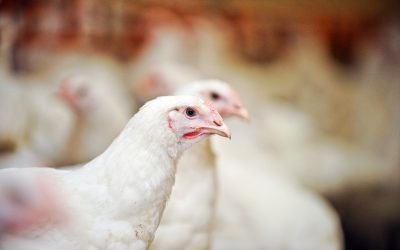Improving carcass parameters in broilers with L-Arginine

Stress, metabolic disorder, body weight gain, breast muscle yield, decreased body fat and achieving better FCR are major challenges of broiler integrators. Supplementation of L-Arginine (L-Arg) not only brings the economic benefits for broilers integrators but also corrects the metabolic disorders and relieves the birds from stress.
Growing concerns about the environmental impact due to animal production compels the nutritionists to reduce the overall CP levels in the animal’s diet and supplement the crystalline amino acids to meet the maintenance and production requirements.
L-Arg is considered to be the 5th limiting amino acid in commercial broiler CSBM based diet after valine. Other than the building block for muscle protein, it plays multiple metabolic functions. Due to lack of urea cycle in poultry, it also acts as a substrate for the biosynthesis of many molecules, including nitric oxide, creatine, glutamate, ornithine and proline.
Immune response and stress
Genetic improvement in broilers based on performance characteristics has resulted in improved FCR, BWG and breast muscle yield, however, its ability to resist diseases has been compromised. Therefore, manipulation of nutrient composition in order to enhance production performance and strengthen the immune system is considered a unanimous strategy for modern broilers.
Certainly, birds are exposed to many stressors during the rearing period because of different reasons like stock density, heat and cold stress, disease, vaccination, catching and the light period. All the stressors together can significantly contribute to the poor performance of birds. For instance, in the slaughterhouse the killing of chickens by electric stunning significantly increases the cholesterol synthesis and elevates the oxidative damage to the breast muscles, which effects the marketability of the carcass. Dietary supplementation of L-Arg is proven to be helpful directly or indirectly by its metabolites to relieve the stress in poultry.
Carcass parameters
L-Arg supplementation can modulate the fat deposition through nitric acid metabolism. As the nitric oxide is the most presumptive metabolite of L-Arg therefore, helps in reduction of undesirable fat deposition in poultry. Secondly, the diets enriched with L-Arg enhances the breast muscles yield and diameter of muscles fibres. The requirements of L-Arg for the improvement of carcass parameters were explored in an experiment carried out in IRTA, Spain.
Comparatively very few studies are available to show ideal Arg: Lys over the carcass parameters. In total 1440 male chickens (Ross 308) were distributed into 48 pens, 30 per pen, and assigned 1 of the 6 diets. The experimental diets were fed to the birds from 0-35 days. The tested Arg: Lys ratios were 0.77, 0.85, 0.95, 1.05, 1.15 and 1.25 throughout the trial. The CP and ME levels were according to the industry standards. At 35 days, a selected number of chickens per pen were killed, exsanguinated and plucked. The abdominal fat and breast meat was weighed and compared in between the treatments.
Improvements in bird performance
The carcass weight increased gradually with the increase in Arg: Lys. Breast muscles yield improved with gradual increase in the Arg supplementation. The maximum response was achieved at Arg: Lys=1.15:1.00 (Figure 1). Reciprocal to breast meat yield the total abdominal fat deposition reduced gradually as the Arg: Lys increased. The optimal response for abdominal fat reduction was attained at the Arg: Lys =1.25-1.00 (Figure 2).
L-Arg needs for the carcass improvement are beyond the present standards (Arg: Lys=1.05.1.00). A better carcass characteristics can be achieved through the addition of crystalline L-Arg in broiler diet. The optimal Arg: Lys for carcass parameters lies between 1.15-1.25:1.00.
For further details contact Dr Daulat Khan, Technical Marketing Manager, CJ-Europe: dr.khan@cj.net
References available on request
Author: Daulat Rehman Khan, CJ Europe, Germany



